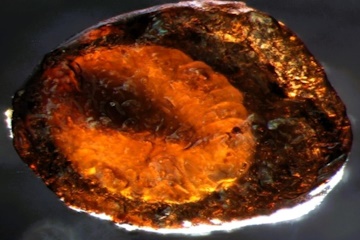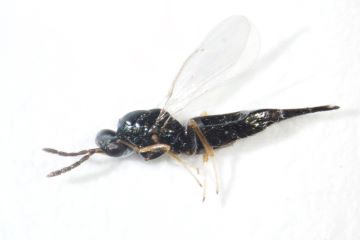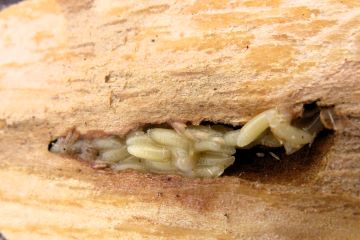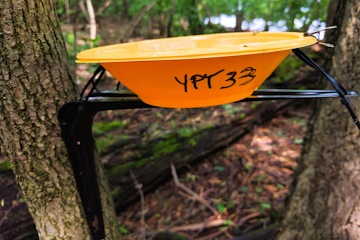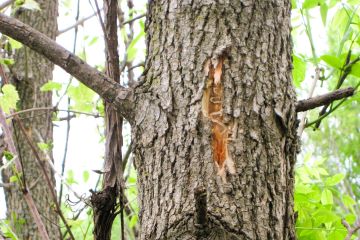In 2025, the Minnesota Department of Agriculture (MDA) proposed 12 areas in Minnesota to be aerially managed for spongy moth with Btk (Bacillus thuringiensis var. kurstaki). Spongy moth is a destructive invasive pest that threatens forest health. Btk is a bacterial insecticide that kills spongy moth caterpillars and is used on high-risk, dense populations.
There is only a short window of time in the spring where Btk is effective, due to the insect’s life cycle. The MDA has not received necessary federal funds for spongy moth Btk aerial management in time and has been forced to cancel these proposed operations.
The areas with canceled Btk management are in Anoka, Carlton, Itasca, St. Louis, and Winona counties, totaling 2,752 acres. This includes canceling the proposed work in the cities of Coon Rapids, Grand Rapids, and Winona.
For decades, MDA in partnership with the United States Department of Agriculture (USDA) Forest Service’s Slow the Spread program has used aerial management to reduce the spread of spongy moth by more than 60%. In Minnesota over 1.1 million acres have been successfully aerially managed.
“Having to cancel Btk aerial management operations in these areas jeopardizes the future success of this program. Spongy moth populations in these areas will likely increase and advance quicker into neighboring areas, making future years of management more complicated and costly,” said MDA Commissioner Thom Petersen.
To prevent any human-assisted spread from these unmanaged areas, the MDA may consider implementing temporary quarantines, restricting the movement of any spongy moth life stages or woody tree material from leaving the area.
The MDA is still planning to move forward with other ways to manage spongy moth populations. We propose to manage 112,000 acres with an aerially applied mating disruption pheromone that stops the moths from reproducing. The MDA will also be conducting our yearly survey that tracks spongy moth populations in the state. Both strategies also rely on federal funding.
Overall, federal funding for these strategies is still uncertain; however, the MDA has been assured to receive initial funding for the spongy moth survey. It is still unknown if federal funds to perform aerial mating disruption operations will be distributed in 2025.
A threat to Minnesota’s forest is a threat to many Minnesotans’ livelihoods and our state’s economy. The MDA will continue to work within its state program to monitor spongy moth populations and to advocate for the best possible management strategies in the future.
###
Media Contact
Brittany Raveill, MDA Communications
651-201-6131
Brittany.Raveill@state.mn.us
Applications are now being accepted for two grant opportunities available through the Minnesota Department of Agriculture (MDA) aimed at helping value-added businesses and livestock product processors seeking to start-up, modernize, or expand their operations and increase their sales of Minnesota agricultural products.
The Agricultural Growth, Research, and Innovation (AGRI) Value-Added Grant and Meat, Poultry, Egg, and Milk Processing (MPEM) Grant programs provide funding for businesses to invest in equipment and physical improvement projects that support expanding production capacity, market diversification, and market access for their products.
Applicants must:
- Intend to or be engaged in the processing of Minnesota agricultural products; or intend to or be engaged with livestock slaughter or processing, including meat, poultry, eggs, and/or milk.
- Be an individual (such as a farmer), business, agricultural cooperative, nonprofit, educational institution, a local unit of government, or a Native American Tribal government.
- Be located or reside in Minnesota and be authorized to conduct business in Minnesota.
The MDA anticipates awarding approximately $2 million between the two programs in 2025 using a competitive review process. The maximum award amount for each grant is $150,000, and the minimum is $1,000. Grantees must provide a cash match of 50% for the first $50,000 of the project cost and 75% for any costs above that amount, up to the maximum grant award of $150,000.
Priority projects for this round of funding include those that:
- Increase food safety
- Increase hemp fiber processing capacity
- Increase access to kosher or halal markets
- Focus on meat or poultry processing capacity, especially slaughtering
Grant applications will be accepted until 4 p.m. on Thursday, August 7, 2025 through the MDA’s online application system.
For more information and to apply, visit the AGRI Value-Added Grant and Meat, Poultry, Egg, and Milk Processing Grant webpages.
###
Media Contact
Nikki Warner, MDA Communications
651-238-7909
Nikki.Warner@state.mn.us
The National Restaurant Association Show is one of several national tradeshows where we host a Minnesota Pavilion.
The Minnesota Department of Agriculture (MDA) is placing spongy moth-infested areas in Coon Rapids, Grand Rapids, and Winona under quarantine beginning May 1. A portion of each city will be quarantined, which limits the movement of woody material out of the area.
A detailed quarantine map of each area is available on the MDA website. These quarantines will be in effect from May 1, 2025, to June 15, 2026.
What does the temporary quarantine do?
- The quarantine restricts the movement of trees, branches, and woody material, including firewood, out of the area. Trees may be pruned, but all branches and woody material must stay on the property (even if limbs are chipped spongy moth eggs are still viable).
- The quarantine requires self-inspection of any equipment, household items, or vehicles that are sitting outside in the quarantined area and are being moved out of the quarantine. This includes items such as wood pallets, patio furniture, grills, as well as, campers, and boats. Residents should look for spongy moth egg masses which are tan, fuzzy masses the size of a quarter. They should scrape the egg masses off the item or leave the item where it is.
High levels of spongy moths were discovered in Coon Rapids and Grand Rapids during the MDA’s 2024 annual spongy moth survey. The spongy moth-infested area in Winona was reported to the MDA by employees at a city campground. The three areas were scheduled to be aerially managed this spring with Btk (Bacillus thuringiensis var. kurstaki), an insecticide used to kill spongy moth caterpillars and control isolated infestations. However, federal funding delays and uncertainties forced the MDA to cancel operations in these locations.
Spongy moths have caused millions of dollars in damage to forests in across eastern United States. The moths are common in Wisconsin and are now threatening Minnesota. If present in large numbers, spongy moth caterpillars can defoliate large sections of urban and natural forests. Spongy moth feeds on over 300 different species of trees and shrubs, including many of Minnesota’s most common trees such as oak, aspen, basswood, and birch.
To provide more information, the MDA will be hosting two informational meetings.
|
In person |
Virtual |
|---|---|
|
Wednesday, April 30 4:30-6:30 p.m. Sand Creek Park Community Room |
Tuesday, April 29 noon-1 p.m. The virtual meeting will be held on Microsoft Teams. |
The MDA will be ramping up survey efforts in these areas and residents will likely notice traps placed on trees in many places. Residents are also asked to be on the lookout for any signs of spongy moths in the area. If you suspect a spongy moth infestation in your area, use the MDA’s online Report a Pest service, email reportapest@state.mn.us or call 1-888-545-6684.
###
Media Contact
Brittany Raveill, MDA Communications
651-201-6131
Brittany.Raveill@state.mn.us
